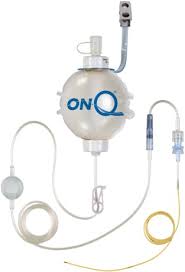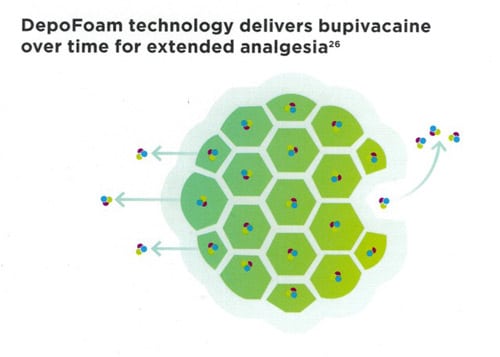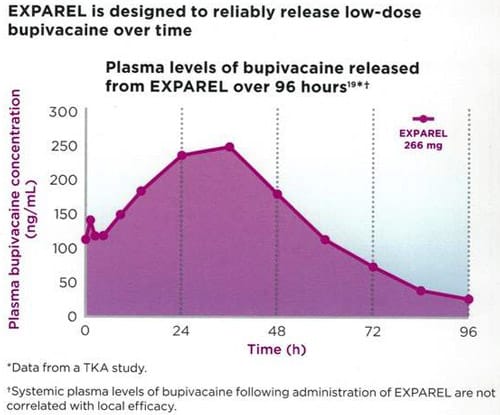Surgical Care
Surgical Care
I follow Enhanced Recovery After Surgery (ERAS) protocols. That means before, during and after surgery our goal is to reduce risk, provide better patient satisfaction, avoid opiate dependency and wherever possible provide detailed and early home care.
Modern surgery should be geared towards obtaining the best possible outcomes with the lowest risk to the patient. Important factors which are associated with an increased rate of complications from surgery include increased body weight, elevated blood pressure, the use of non-steroidal agents, steroids and or accutane and uncontrolled diabetes mellitus. In view of the above, all patients are screened for these factors in the office and the problems are addressed and optimized prior to surgery. Specifically, we treat obesity utilizing a regimen we call ‘The 3S’s’ ( South Beach Diet, sugarless home, stationary bike: exercise 3x’s weekly to a heart rate of 125 for 45 minutes ) together with very low dose medication of phentermine which is combined with toperimide and which are taken together orally. This regimen often leads to a weight loss of 1-3 pounds per week. Before surgery blood pressure is often elevated due to the stress of the event. We use clonidine to control this phenomenon, which works by lowered stress related blood pressure at the brain level. We encourage patients to make sure they take their usual blood pressure medications on the day of surgery with a sip of water.
Before Surgery Smoking
Nicotine is a powerful blood vessel narrowing chemical. High blood levels are found in cigarettes products because of
Before Surgery Medications
Take all usual meds day of surgery with
Exceptions ( ie. do not take these ) include:
- Non-steroidal agents: aspirin/Excedrin/
mediprim , naproxen/naprocin /aleve , ibuprofen/motrin /advil - Insulin and oral
hypoglycemia agents: this should be discussed and time-tabled with the MD - Birth control pills should be stopped 3 weeks before surgeries lasting greater than 45 minutes duration
- Oral steroids can be continued but only if the patient receives 20-30,000 Units of vitamin A orally starting one week or greater before surgery.
- Accutane should be stopped 6 months prior to surgery
The Before Surgery Clinic Visit
This is called the ‘preop’ visit.
- During this visit you should receive all the medications by way of prescription,
hand written , called in orbyemail ‘Escription’ to your pharmacy - You should have read, signed and received a copy of the consent forms related to the procedure(s) you will undergo.
- After Surgery Pain Control should be discussed including the importance of always taking pain medication with food should be reinforced in order to reduce after surgery nausea and vomiting. Other methods to control pain will also be discussed including Exparel– a 3-4 day lasting anti pain injection and a transcutaneous local anesthetic Pain Pump to the surgical site which lasts usually 6 days.
- A physical exam including a blood pressure check focused on your heart and lungs will be performed.
- Appointments for the next 2 visits after surgery will be written and given to you
- This is an opportunity for you to raise any and all questions you have related to the surgery. It is not a time to discuss new procedures or to change the procedure. If that is the case it would be better to contact the office immediately to discuss new choices and it may be better in such a case to defer surgery until these new concerns or requests have been addressed by way of another consultation.
- A history of
family member who had leg deep vein clots or clots of blood in the lungs should be discussed with the MD. The MD will provide you details on how to prevent clots, what are the symptoms and signs of clots and what to do re immediate emergency room visits if you suspect you might have a leg or lung clot. - The MD will go over with you use the use of stool softeners, anti-vomiting suppositories, how to advance the diet from ½ strength Gatorade to regular diet after surgery, the use of probiotics to avoid yeast infections including incisional infection as well as preventing colitis after using oral antibiotics. The general rule is no solids for 8 hours before surgery and no ½ strength Gatorade or water for 4 hours before surgery for adults.
- Scar management will be addressed during the second after
sugery
After Surgery Nausea and Vomiting
‘PONV’ protocol refers to the standard use of
Home Care: The Nurse
All patients who undergo abdominoplasty with or without breast surgery will go home from the Surgery Center with
Home Care: Positioning and The Surgical Bed

Most people who want a tummy tuck or a breast reconstruction using the lower abdomen (TRAM flap ) would like to remove as much skin and fat as can be done safely. This requires
Home Care: The Pain Pump, Exparel, & Muscle Relaxants

Home Care: The Pain Pump
Not to be confused, a pain pump is not the same thing as an intravenous patient controlled analgesic pump. The pain pump is a small tube, the size of spaghetti which is placed between the skin and the underlying tightened muscle in the case of a tummy tuck which drips 2-4mls of a local anesthetic agent until the reservoir is empty, usually 4-6 days later. The reservoir is kept in a nylon bag around your neck until it is time to be removed. The little silicone tube is taped to the skin with a clear sterile dressing and is painless to remove. This pain pump is the difference between waiting for the next or pain medication dose versus perhaps not needing any oral narcotics, ie minimal Norco usage.

Home Care: Exparel
Exparel is an injection into the surgical site: muscle, soft tissue and under the skin of a local anesthetic agent bupivacaine which is contained in a lipid package.
The effect is a slow release over 4 days. This means the levels of the local anesthetic in the blood are not high but the levels in the tissues where you would have pain are enough to make you comfortable while at rest for 4 days. For some patients they may not need to take any pain medications and for patients following breast surgery it is ideal to have no tubes addiing fluid to the implant pocket. It is not uncommon for patients to require less narcotic derived pain medications when using this medication, which could possibly help prevent drug dependency especially in younger patients.

Home Care: Muscle Relaxants
Flexeril is a muscle relaxant which is particularly helpful during the first 4 days after surgery. It works well for pain associated with movement. After an abdominoplasty, submuscular breast augmentation or any procedure where the muscle has been manipulated the majority of pain in the first few days is associated with muscle spasm. It is not uncommon for patients to require less narcotic derived pain medications when using this medication, which could possibly help prevent drug dependency especially in younger patients.
Home Care: VTE information
Any patient who has having a surgical procedure over 45 minutes is at risk of developing a clot in their leg or pelvis and then the clot has the potential to migrate to the lung and obstruct the blood flow to the lung which can lead to hunger for oxygen or damage to the lung, even possible death. So there are 3 imprtant things to be aware of before surgery:
- How to prevent a deep vein thrombosis (DVT) and pulmonary embolus (PE) or together veinous thromboembolism (VTE). The prevention includes using “ The Rule of 3”, easy to remember since all have the number 3 associated: leave your below knee TED stockings on for 3 weeks continuously, these stockings which will be placed on you just before surgery in the Surgery Center; use the incentive spirometer by inhaling to 1, 500mls ( the device will be given to you in the recovery room after surgery and it is marked to ‘1500’ ) to be used 3 times an hour when you are awake for a minimum of 3 days, and make sure you get up and walk a minimum of 30 paces: twice the length of your foot, 3 times a day.
- How to decide if you need chemoprophylaxis, ie lovenox subcutaneous injections for 7-10 days after surgery: https://www.mdcalc.com/calc/3970/caprini-score-venous-thromboembolism-2005#next-steps
- How to recognize the symptoms and signs of VTE: the most common compliant for DVT is swelling of a calf and or foot and shin with pain in the calf which is worsened when you curl your toes upwards. Regarding PE, the most common symptom is dyspnea- which means difficulty breathing, this could be from rapid, shallow, tight, painful breathing or air hunger at rest or worsened with excursion. Regardless of which of the above you experience it requires an immediate visit to the nearest Emergency Room. If the above symptoms are significant then an ambulance may be required and driving yourself to the emergency room is not advisable.
- The presence of the symptoms and signs including but not limited to the above must be immediately evaluated in the nearest Emergency Room and this may involve an ultrasound of the leg, a cat scan of the chest and some blood tests. Treatment of VTE is almost always completely successful providing it is addressed early.
Home Care: Drain Management
The LVN will show you how to empty your drains twice daily. Providing the output is not excessive, ie filling up in a matter of a few hours, you are not required to chart output. The day of your office visit after surgery
First Clinic Visit
During this visit the main objective is to make sure the wounds are healing and to perform a dressing change when indicated. Hand surgeries often will require a longer time before dressing change and drains are usually removed 1-3 weeks after surgery but not on the first visit. Any issues re medications should be addressed and refills can be given to you. Remember because of the recent concerns over narcotic abuse we can not call in to a pharmacy opiate /
To find out more about available treatments and procedures, request a consultation with Dr. Moulton-Barrett at one of his Bay Area offices. Board certified plastic surgeon Rex Moulton-Barrett, M.D., offers advanced care and procedures for Bay Area residents. He has offices in Alameda and Brentwood, CA.
Alameda Office
2070 Clinton Ave,
Alameda, CA 94501
510-864-1800
Brentwood Office
1280 Central Blvd, Suite J-5,
Brentwood, CA 94513
925-240-8775
CONTACT US
Alameda Location
2070 Clinton Avenue, Alameda, CA 94501
510-864-1800
Brentwood Location

